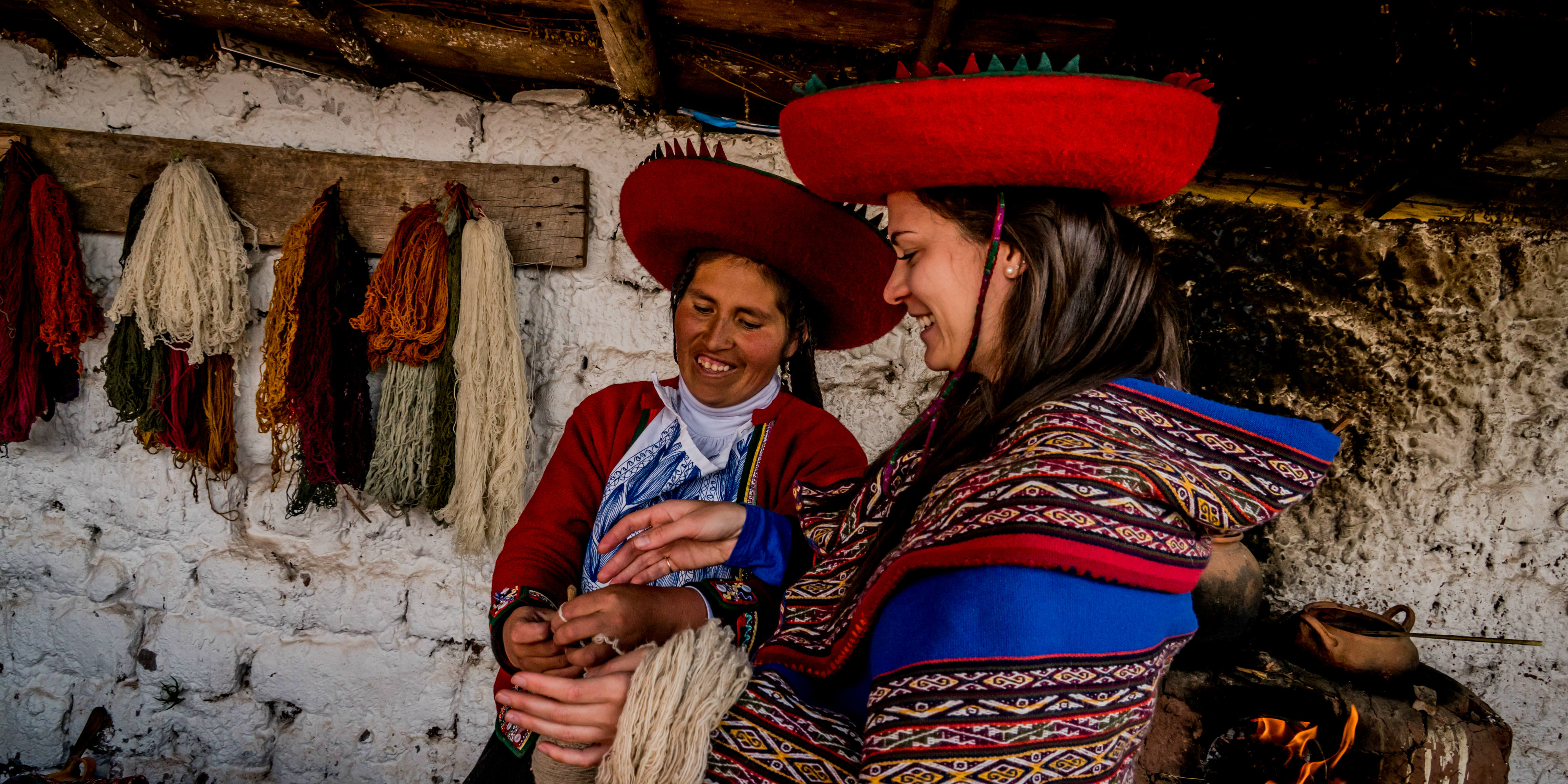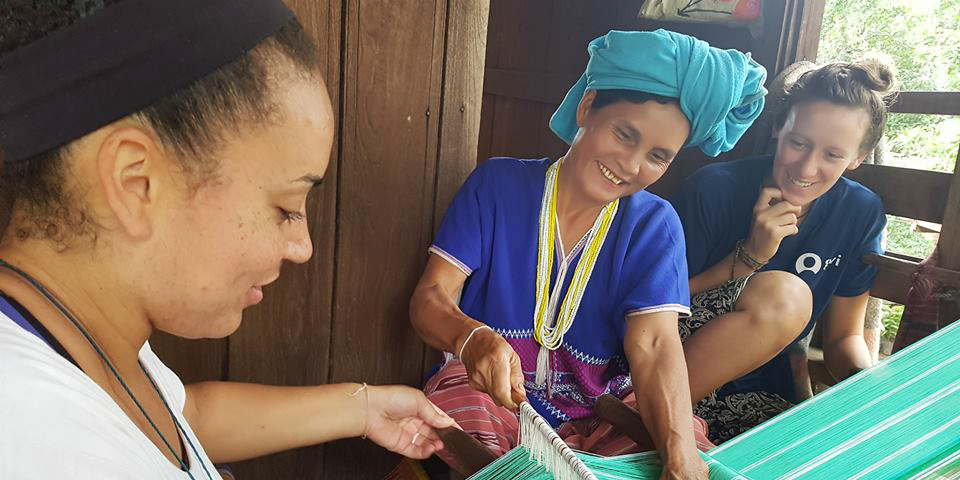Embark on a journey through Barcelona's captivating art and architecture. Explore the visionary works of Gaudí, Picasso, and more, set against the city's stunning landscapes.
GVI
Posted: July 5, 2024

Zaytoen Domingo
Posted: September 1, 2022
7 min read
Connecting with another culture is often the most memorable part of travelling abroad. But can you take it too far?
Travelling with an open mind means exploring the customs and cuisines of another culture. Yet adopting the practices of a culture that isn’t yours can raise criticism and debate, and rightly so. For example, is a Thai tattoo a permanent reminder of your time abroad, or a sign of appropriating Thai traditions?
Cultural immersion is an important part of GVI’s volunteer programs. It’s essential for reaching a deeper understanding of your host country and the issues they face. With that in mind, we’re exploring the idea of appreciating another culture while treating it with respect.

A GVI participant learns about traditional wool dyeing techniques from a community member in Cusco, Peru. Photo: Tim Borny
Cultural appreciation is simply when you take the time to learn about different cultures and their traditions with an open mind. This involves understanding the significance of items of clothing, cultural festivals, traditions etc.
Cultural immersion takes this appreciation one step further by surrounding travelling to a country and interacting with the local people. The act of immersion allows you to gain a fuller and deeper understanding of the local culture and its people.
Learning about your host culture might involve living in a homestay and trying traditional meals, learning to speak or greet people in a different way – maybe a particular hand gesture or a phrase in the local language – or dressing more conservatively to show respect for the local culture.
Integrating culture with tourism can benefit both travellers and locals, and experiencing and participating in other cultures is often the most memorable part of travelling. It’s what makes spending time overseas so compelling and is the foundation for becoming a more conscious global citizen.

Cultural appropriation can most simply be described as adopting aspects of another culture for some form of gain – to look cool, receive compliments or money. Lipsitz argued that cultural appreciation becomes cultural appropriation “when an element of culture is adopted from a marginalised group without respect for its cultural meaning or significance or with the purpose of exploiting the culture for economic or social gain.” For example, if you’re taking the traditional clothing of another culture and using those items as statements to look trendy or edgy, then there’s a good chance you’re appropriating that culture.
In contrast, cultural appreciation and immersion approaches traditions, cuisine, dress or language from a place of respect and understanding. For example, you wear a particular item of clothing as a mark of appreciation towards someone’s culture. Immersion is a way of appreciating a culture and facilitating meaningful exchange.
The key difference between cultural immersion and appropriation is that when people appropriate traditions, cuisine, dress or language, they do so while marginalising the culture where those things originated. You might wear a Halloween outfit that represents another culture. This might make your look cool amongst your friends, but will cheapen another’s culture by turning it into a costume.
Simply put, cultural appropriation is when you place yourself in the centre and cultural immersion is when you place the culture in the centre. If enjoying aspects of another culture benefits you more than the local people, it is likely straying into the territory of cultural misappropriation.

The line between appreciating and appropriating another culture can seem blurred. However, if you stick to some basic guidelines, you’ll find yourself comfortably on the side of immersion. Being a conscious, responsible traveller is important in making sure you appreciate, rather than appropriate, culture.
Understand that you are a guest in another country and should act accordingly. Take the time to learn about the culture of your host country. Ask questions, observe and do your own research. Having a background on what artefacts or customs mean to locals will help you appreciate and understand them.
Sojourner suggests asking yourself these questions to help make sure you’re on the right side of the thin line between appreciation and appropriation.
Instead of buying something because it looks cool, buy it because the history or symbolism fascinates you, it reminds you of your homestay or it will be a souvenir you can treasure as a memory of your trip.
Understanding context is often the key to separating out immersion and appropriation. For example, if objects are sacred, you should make an effort to understand their significance and whether or not it is appropriate to take photos of or even buy certain objects.
It’s also a good idea to question how your participation in the local culture impacts people. For example, if you shop for souvenirs, try to buy from local craftspeople and vendors. If you buy from large companies who are making a profit from producing cultural items, you could be contributing to that culture being exploited.

A woman from the community of Huay Pakoot, Chiang Mai, teaches GVI participants how to weave textiles by hand.
GVI encourages cultural immersion on volunteer programs and we actively challenge ourselves and our participants to avoid cultural appropriation. Volunteering is a great way for people to participate in other cultures and take part in cultural exchanges.
All of our volunteer programs take a community-driven and collaborative approach, which means volunteers will be placed at the heart of a community. You’ll find that many local people will be happy to teach you how to speak their language and conduct yourself in public
The respect you gain for your host country’s culture and people will help guide your decisions around how you behave and the kinds of souvenirs you choose to take home with you.
In GVI’s volunteer program in Chiang Mai, for example, volunteers are accommodated in homestays and develop close relationships with the local community. You’ll be living with a warm family who will introduce you to traditional ways of life. You’ll learn to adapt and develop a deep respect for Thai traditions.
Explore more volunteer programs around the world to find your opportunity to immerse yourself in another culture.
By Zaytoen Domingo
Embark on a journey through Barcelona's captivating art and architecture. Explore the visionary works of Gaudí, Picasso, and more, set against the city's stunning landscapes.
GVI
Posted: July 5, 2024